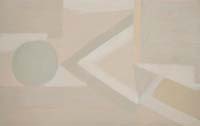|
Serge Charchoune (1888 - 1975) |
5943 |
|||
|
Pierre Lecuire Abracadabra Paris: Lecuire, 1971 260 x 401 mm. 32 folded leaves Edition: 76. Copy nr. 18/66
|
Serge Charchoune was born in Samara in the south of the Russian Empire. He applied for The Kazan School of Art but was refused. He was accepted in Moscow but in 1912, being called to military duty, he fled to Paris. There he studied art under Metzinger and Segonzac. In 1913 he held his first exhibition with cubist works. During the first World War he lived in Spain, in Barcelona and Mallorca. Here he had his first contacts with Dada. More important was his discovery of the azulejos, the ornamental Moorish tiles. Back in Paris he sought the company of his more quiet fellow Russian exiled painters and poets as his retiring nature kept him from enjoying the violent enthusiasm of the Dada group. He was known for his modesty and his lack of aggressiveness in his painting, and was sometimes passed off by art critics as an intellectual’s painter. In his later years his works in soft colours tended towards monochromes. The cover of Abracadabra is a typical example of Charchoune’s soft coloured abstract works. His works are instruments of meditation more than of enchantment. This book is a poetry-portrait of the painter in 46 letters he wrote to his friend the poet Pierre Lecuire. He added 15 line drawings that sum up the letters but add some soft mockery and one could imagine it to be a humorous game between the artist and the poet. References: Paris 2001, nr. 62 Madrid 2004, p. 275 |
|||
